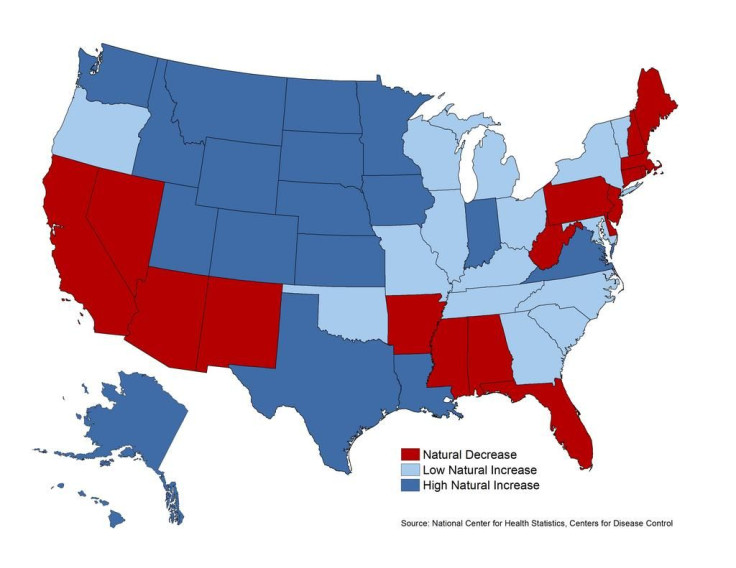More White Americans Are Dying Than Being Born In One-Third Of US

White people are dying faster than they are being born in one-third of the United States, particularly in the most populous states.
A study from the University of New Hampshire shows that the disparity is the greatest in American history, with 17 states — together accounting for nearly 40 percent of the nation’s population — having more deaths of non-Hispanic white people than births. There were only four states experiencing that trend in 2004. And the researchers think the gap will only grow wider: “Our analysis of the demographic factors ... suggests that the pace is likely to pick up in the future.”

The states where more white people were dying than being born are California, Pennsylvania, Florida, Arizona, Massachusetts, New Jersey, New Hampshire, Mississippi, Arkansas, Delaware, Nevada, Maine, Alabama, Connecticut, New Mexico, West Virginia and Rhode Island.
Read: Global Elderly Numbers Projected To Break A Billion By 2050
It’s entirely possible the trend, as the study suggests, has already gotten stronger in the last couple of years, since the researchers used data only as recent as 2014, the most current that was available.
For people familiar with the baby boom after World War II, the findings may not be surprising. The large increase of births in that era, between 1946 and 1964, means there is a large aging population today. “This senior population is projected to expand from nearly 15 percent of the total population in 2015 to nearly 24 percent in 2060,” the study says. “Much of this aging baby boom population is white, and so white mortality is growing.” But having fewer women of childbearing age and low birth rates today are also contributing to the trend. The study attributes the latter factor in part to “the Great Recession.”
The demographic shift among whites was not mirrored in other populations: “Births exceed deaths by a considerable margin among the younger Latino population, and the combination of these very different demographic trends is increasing the diversity of the U.S. population.” The only way to offset the “natural decrease” in the white population is through migration, according to the study.
Ken Johnson, a demographer and sociology professor at the university, told New Hampshire Public Radio that specifically in New England, where some areas are diverse and others are predominantly white, he expects “there’s going to be tensions between the needs of some parts of the state that are dealing with a more diverse population and the needs of other parts of the state which are really dealing with this decline in the white population, both through natural decrease, and through aging. The focus is going to be on senior centers not on new pediatric wards in hospitals, and that sort of thing. It’s a very complex dynamic that plays out at many different policy levels, from the United States as a whole, to the state, to individual areas within the state.” He sees the dynamic changing in that way in more parts of the country as time goes on.
According to a statement from the University of New Hampshire, census projections put whites at less than half the U.S. population by 2050, and young Latinos at almost 30 percent in 2060.
Read: Caregivers For The Elderly Have Higher Levels Of Stress



























